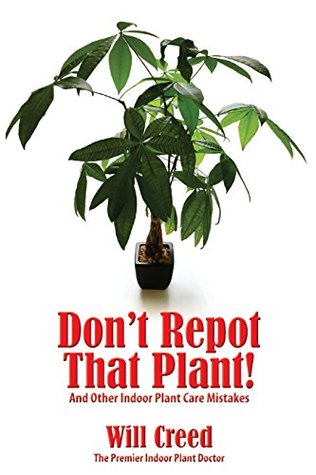Download Don't Repot That Plant!: And Other Indoor Plant Care Mistakes - Will Creed file in PDF
Related searches:
You'll keep houseplants happy when you know how to tell when to repot a plant. Nail down the timing and repotting process with the advice in this guide.
To repot these plants, simply grab the plant as a whole, lift it, and replace it with a larger container, making sure not to damage their root systems in the process. Common signs that a plant is stressed out and needs to be repotted include falling leaves and overcrowding, as well as roots that protrude from the surface of the soil.
Diy experts discuss several plant varieties and the planting information for each zone. Deciduous shrub noted for its large oak-like leaves and large clusters of white flowers plant in full sun with adequate moisture to moderate shade plant.
Some are easy to grow, while others require tender loving care. Because of this, the different types have varying requirements to help them thrive. If you want to add orchids to your home garden, here's a gene.
Any ideas anyone? we presume it's from one of the seeds that's fallen out of the bird feeder.
I'm ~rooting~ for you! i'm ~rooting~ for you! community contributor take this quiz with friends in real time and compare results this post was created by a member of the buzzfeed community.
Undoubtedly, whatever other plants they sell are delivered in just as good condition as these, but i'm really into flowers, and it seems this company doesn't have a lot of pretty flowering plants. I'll just content myself with my two goldfish babies and be happy.
Plants are defenseless against the munching mouths of herbivorous animals, but some carnivorous plant species take matters into their own stems by snacking on bugs.
Repot young jade plants once every 2 to 3 years to encourage growth. With older jade, repot once every 4 to 5 years or as necessary. Transplant in the early spring, just before the growing season begins.


Post Your Comments: